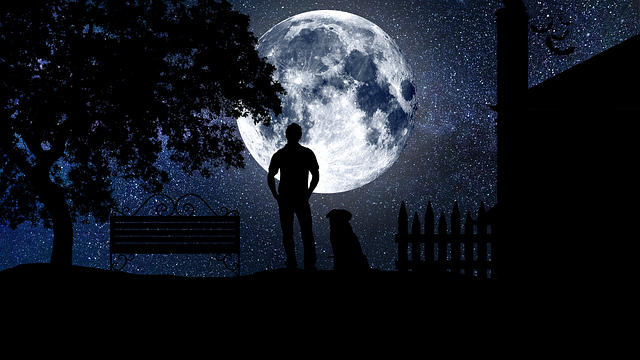Guest Post – Seana Moorhead
Confession: For many years, I didn’t like short stories. The concept conjured memories of high school English classes where we were required to create short stories, filling lines with sweet teenage angst like a Boston cream pie donut. I used to like those donuts when I was nine. I also adored pink and blue bubblegum ice cream at that age. There are some things you grow out of and I had put short stories into that category.
Then I started taking my writing more seriously and I’ve come around to admiring the short story format, especially those under 3000 words. And I discovered there’s a reason why many short stories don’t work well for me. It’s very hard to write a good short story. You have to pack everything you could put into a novel of 70,000 words: break it down to the essential, still write beautifully, and make sense so you don’t lose your reader for lack of words.

When you find a good short story, it is like the Scotch whisky of writing. There’s depth and multi-layered flavours from the first sniff to the last lingering taste in your mouth. Like a good Scotch, you don’t need a lot to appreciate its beauty.
Here’s my list for why every writer should strive to write a short story:
It’s Short
By definition, it’s short. You can practice the craft of writing without committing to an entire novel. If it doesn’t work out, you probably haven’t invested years of work in it. You can burn it, eat it, or recycle it and start something new. Basically, it’s like only committing to a first date. Unlike a novel, you don’t need marry your story and then later have to suffer through a nasty divorce when it doesn’t work out.

Yes, I dare you to write a short story on a slate!
Finding Readers
You can get other people to read it because it’s short. Getting someone to commit to reading your mega three-inch tome can be difficult. Much easier to get feedback by having your friends and family read your 1000 words of prose.
Reworking
Despite No 1, you can invest years into perfecting your short story, and it’s easy to go back and pick up and re-work it because it’s short. Try doing that with your 120,000-word novel stuck in your bottom drawer with your socks.
Hone your skills
You will become a better writer. Being forced to keep your story to only 2000 words means you have to make every word count. You don’t have the page space to tell us about the entire history of your character or about the Napoleonic wars before the plot begins. Learning how to tell a story with only a few words will make you a better writer.
Rejection Training

You can enter short story contests and learn how to handle failure. Learning how to accept rejection will be valuable when you try to publish your novel later. This is an important life skill for a writer. Or really anyone willing to be brave and try something new.
The Short List Creds
You can enter short story contests and get short listed. This will be a boost to your confidence and morale. You are a writer! Even better, you might actually win. You are definitely a writer! You can celebrate with cake and ice cream (but please, not bubblegum flavour).
Publishing Creds
You can get your short story published in a magazine or anthology. Maybe even earn cash (or at least a free copy of the book). You now have publishing credentials to add in your pitch to agents when you finish that novel.
Experiment

You can experiment with POV, tenses, blending genre, trying a new genre (like a paranormal western). Go crazy! It’s only a short story. If it doesn’t work out, remember no 1.
Editing Skills
You can improve your editing skills. For most writers, learning how to hone editing and revising is an essential skill. A short story is a good format to get critical. Check every word and sentence. Way easier to do this in short story and find your weakness. Do you jump around in your verb tenses? Use too much passive voice? Have favourite words? Lover of adverbs? A short story is an ideal format to polish those editing skills.
Serendipity
You may create something beautiful and make some reader fall in love with short stories again.
Meet Seana Moorhead

Seana Moorhead is an aspiring writer and is working on completing her first fantasy novel. She moved to Grey County in 2002, having a passion for outdoor adventures, including kayaking and wilderness camping. Suffering from a book addiction, she reads almost anything that grabs her attention, leads her into another world or teaches her something new. Seana lives in a bush lot near Owen Sound, Ontario with her partner and three dogs.














 Most readers, even though they may not realize it, read to mirror their own lives. Have they felt that way before? What would they do in a similar situation? How is this situation different from their lives? A story about events of that civil war would be different from an average reader’s life, but would it connect with readers on a human, emotional level? The key to making my story work was to focus not the events the reader couldn’t relate to, but on the emotions the reader could relate to. The emotional mirror.
Most readers, even though they may not realize it, read to mirror their own lives. Have they felt that way before? What would they do in a similar situation? How is this situation different from their lives? A story about events of that civil war would be different from an average reader’s life, but would it connect with readers on a human, emotional level? The key to making my story work was to focus not the events the reader couldn’t relate to, but on the emotions the reader could relate to. The emotional mirror. “In almost every instance the result is the same,” he says, “The ‘riveting’ piece bores, while the ‘boring’ piece holds interest.”
“In almost every instance the result is the same,” he says, “The ‘riveting’ piece bores, while the ‘boring’ piece holds interest.” As I wrote, I closed my eyes and imagined the scene in my mind. What could I see above, below, to the sides? What people and things were in my periphery? What could I hear, smell, touch, what was the quality of the light, temperature of the air? What emotion was I feeling at each point and what did that emotion look like in gestures, actions and reactions?
As I wrote, I closed my eyes and imagined the scene in my mind. What could I see above, below, to the sides? What people and things were in my periphery? What could I hear, smell, touch, what was the quality of the light, temperature of the air? What emotion was I feeling at each point and what did that emotion look like in gestures, actions and reactions?  To heighten the feeling of disorientation, of not fitting into a new world, of being out of control, I edited to make the sentence structure disjointed in places, short and fragmented in others and even syntactically out of step at times.
To heighten the feeling of disorientation, of not fitting into a new world, of being out of control, I edited to make the sentence structure disjointed in places, short and fragmented in others and even syntactically out of step at times.